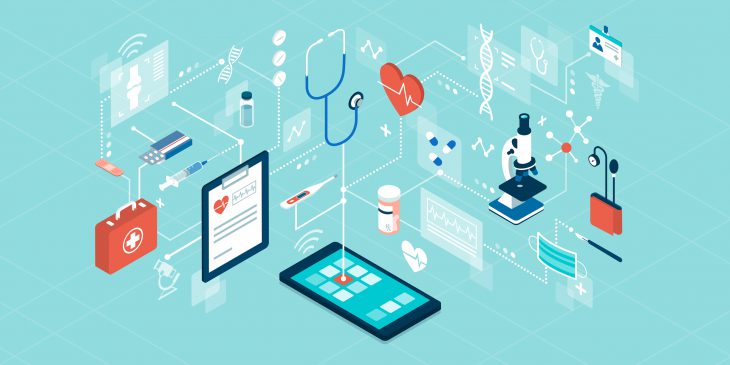Telemedicine has taken off in response to the COVID-19 pandemic, with hospitals around the world looking to technology to help them care for patients while limiting the potential for exposure to the novel coronavirus. A similar trend is underway at UPMC, which is strongly positioned to meet new demands because of the organization’s significant investments in telemedicine and supporting technologies over the last few years.
UPMC experienced a massive shift in patient volume to its primary telemedicine solutions, MyUPMC Video Visits and UPMC AnywhereCare, in March and April as stay-at-home orders were issued in response to the pandemic. UPMC conducted as many telemedicine visits over two days in March as it did in all of 2019, and telemedicine visit volume peaked at more than 9,000 per day. As more patients have returned to clinics and hospitals for in-person care in recent months, telemedicine volumes have leveled off at a few thousand per day.
“UPMC providers are ready to see patients virtually, for urgent care or non-urgent care,” said Dr. Donald Yealy, UPMC senior medical director and chair of emergency medicine. “Video visits help keep patients and providers safe while allowing hospitals to have more critical protective equipment when COVID-19 positive patients need care at a hospital.”
The ability to handle this unprecedented uptick in demand for care highlights UPMC’s longstanding commitment to innovation and its history of technology leadership in health care.
A Major Tipping Point
While UPMC’s focus is on providing the best, safest and most convenient care during the pandemic, the telemedicine capabilities being scaled and further enhanced today will benefit the health system and patients for years to come. More patients have now experienced the ease of accessing care online and through their mobile devices, and more providers have become comfortable with the technology.
Health systems were already planning and investing for the increased use of telemedicine before COVID-19 radically changed the delivery of health care. Research published in February by the Center for Connected Medicine, of which UPMC is a founding partner, showed most health systems had one to three patient-facing digital health tools and were implementing such tools to improve access to care through telehealth and e-visit capabilities.
With the trend toward care moving online, this moment in time will likely be viewed as a major tipping point for health care’s embrace of digital health, including telemedicine. Providers and patients who were once reluctant to try telemedicine will continue to use it even after the COVID-19 pandemic passes.
“Telemedicine has worked so well that it’s unlikely providers will switch back to the old way of performing medicine for certain patient populations post-pandemic,” said Carla Dehmer, UPMC’s director of telemedicine. “More patients will receive high-quality care within the convenience of their own homes and be able to see their provider without having to find transportation, childcare or time off work. The way we perform medicine will forever be changed. And UPMC is ready.”
This is the first article in a four-part series about the impact of telemedicine at UPMC during the COVID-19 pandemic. Check back each Friday for the upcoming installments.









